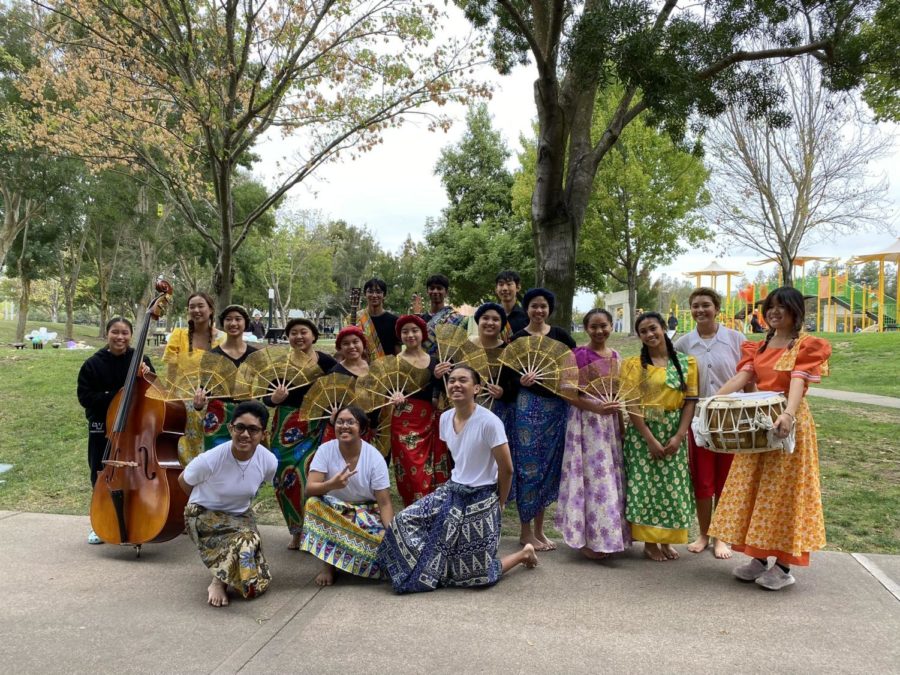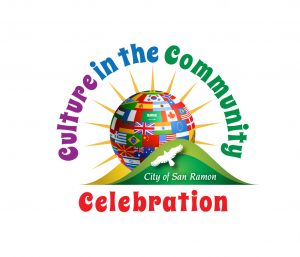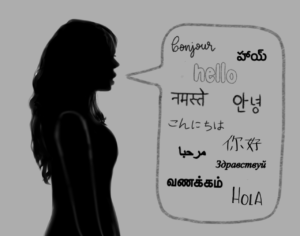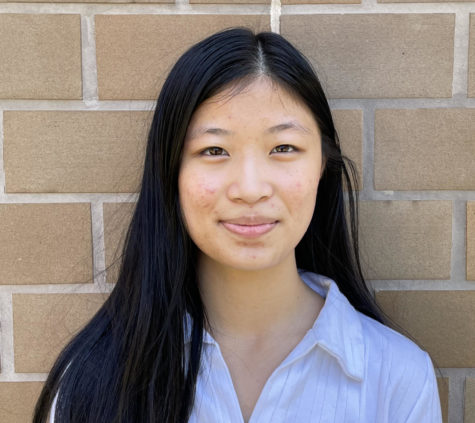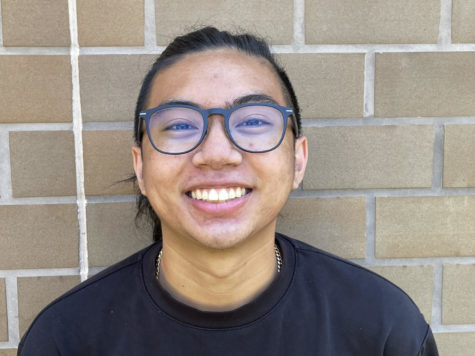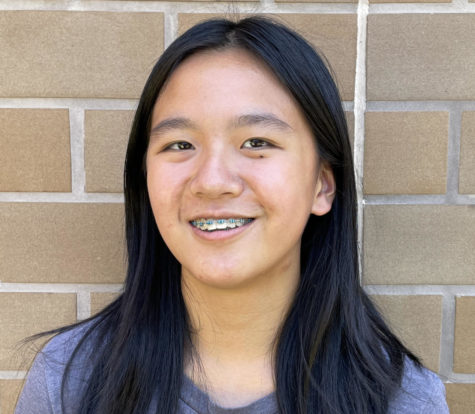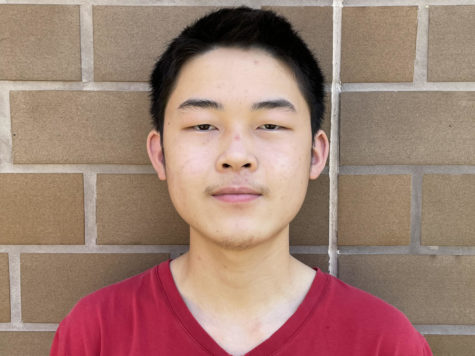San Ramon embraces diversity at annual Culture in the Community festival
Samuel Minioza
The Kaligayahan Dance Troupe, affiliated with high schoolers from Dougherty Valley and Cal High, performed a medley of traditional Filipino dances.
November 17, 2022
On Oct. 16, the city of San Ramon hosted its annual Culture in the Community event in San Ramon’s Central Park to highlight cultural diversity in San Ramon with traditional and folk dances, songs, foods and arts.
The long-running event, which has been a staple of October festivities in San Ramon for several years, included many returning dances and performances. Groups like Hansamo, Kaligayahan Dance Troupe, Thunder Kung Fu Academy and the McBride School of Irish Dances returned to the event, representing nations as far as South Korea and the Philippines all the way to Ireland and Argentina. Here’s what some of the cultures had to say about the importance of the event to them:
South Korea
South Korea featured a cultural booth and Pungmul Nori dance performance showcasing Korean culture. These events were mainly organized by Hansamo, the main Korean-American organization representing Korean culture at the festival.
It was a vibrant celebration of Korean culture, one that some Korean-American high school students see as a reaffirmation of their cultural heritage.
For Monte Vista High School junior Alicia Kim, it took a while to find gratitude in her Korean roots. However, she now runs the Korean culture booth at the festival.
“Growing up as a minority, it was hard to be a Korean American, especially because I felt out of place,” she said. “It was a bit hard to accept that I was Korean and I’d wish that I wasn’t Korean. But as I grew up, I realized what a blessing it was to be a Korean in America; I was so grateful for it, which is why I joined Hansamo. We spread our culture and now I love talking about it.”
Events like Culture in the Community allow students like Kim to display their culture to others.
“Culture in the Community is important because there’s so many cultures that not a lot of people know about, and there’s so many that are underrepresented because of the media. So just having stations here and there, just talking about our history, we can also teach other people about what we’re doing,” Kim explained. “It’s also just really fun to learn about other people as well.”
India
Another feature at Culture in the Community was the Namaha Foundation, an arts group in San Ramon that mainly celebrates ethnic dance. The event had many ethnic Indian dance groups performing with the Foundation specifically celebrating “diverse, ethnic forms of performance arts” in San Ramon.
“India is really rich in dance forms: we have eight classical and tons of other folk forms, and we think that’s really cool,” Amiya Sheshadri, a Dougherty Valley High School junior representing the Namaha Foundation, said.
She explained the significance of events like Culture in the Community.
“It’s really important to educate others because it’s amazing how we see so many different cultures and so many different representations that we normally don’t even think of traditionally,” she explained. “It’s really cool that we get to share and spread that.”
Furthermore, she explains that a larger global context necessitates events like Culture in the Community.
“I think it’s really important to be aware, especially in a country of so many immigrants and a world where globalization is just so real,” she said. “I think it’s important to be aware of who you’re sharing this planet with.”
Hungary
The Hungarian booth had a deep dive of Hungarian history while featuring presenters in traditional costumes.
Pointing at a historical map of Hungary, Laszlo Velinszky, one of the booth presenters, explained how the country’s borders have changed since World War I. He moved onto a different map and began to recount the story of a Hungarian scholar who traveled all the way to Tibet. It was evident that he takes pride in his country’s history while remaining well-adjusted to his post-immigration life in America
“I have three kids and they were all born in the U.S., but I like to keep them attached to their roots somehow. While we go to the schools here, we also take them to the Hungarian Sunday school, where they learn the Hungarian language. We also go to the Hungarian church sometimes, but it’s a connection based on the language,” he said.
Another one of the booth presenters, Attila Egyedi, is originally from Transylvania. He immigrated to the United States in 2015. He tells his own story as he stands in traditional Hungarian folk dress.
“I might be not typical; I’m an engineer, but it’s also very important for me to maintain the culture,” he said.
Egyedi elaborated on the different activities that connect him and his family to their Hungarian background.
“I’m doing folk dancing and am also part of a Hungarian cover band, where we perform songs in Hungarian. When my kids were here, they also went to the Hungarian scouts and we go to the Hungarian church from time to time,” Egyedi said. “When someone from Hungary visits, like a musician or artist, we try to go there and support them. We try our best in the U.S. to maintain our culture.”
Besides discussing their cultural backgrounds, the presenters also warmly introduced people of different cultures to aspects of their native Hungary.
“In our booth, we try to bring some of the traditional fall costumes you can find in Hungary, and also from Transylvania (which used to be part of Hungary),” Velinszky said. The result of showcasing these is to hopefully introduce “some connection [between Hungary to] all the different people in San Ramon.”
Velinszky finds Culture in the Community to be a very natural way to celebrate San Ramon’s cultural makeup.
“We are a big mixing pot of all different cultures and I think it’s good to showcase that to better understand each other and know each other,” he said. “We show that this is a diverse world; we are people from all around the world coming together and working together.”
China
China’s booth displayed historical Chinese items, including a lion dancing costume, mao bi (calligraphy pens) and various other activities, including strumming a pipa (Chinese zither).
The guzheng, traditional Chinese zithers, were also featured in performances representing Chinese culture presented by music school Zithers Academy. Besides Zithers Academy, musician Leyi Lu, a junior at Dublin High School, took part in a three-act instrument showcase with California High School junior Yutong Zhen and California Crosspoint Academy sophomore Alex Lu.
“This is the pipa, a traditional Chinese instrument with over 2,000 years of history. It has four strings and you play it with your right hand,” Leyi Lu explained. “And these are fake fingernails that we put on [to pluck the instrument].”
Their performance also featured another traditional instrument, the Chinese flute, played by Alex Lu. He explains that the instrument not only serves for personal enrichment as a relaxing hobby, but also as a form of cultural connection with others.
“It’s a good chance and a good opportunity to have more people get familiar with our culture, which is better for the community as a whole. It helps people bond,” he stated.
Meanwhile, the energetic kids of Zithers Academy were quick to exclaim what Culture in the Community meant to them: “We want to spread Chinese culture,” one girl said, before scampering off with her group to ensure they didn’t miss their cue.
And so, the plucking sounds of zithers filled the air; Chinese culture was being spread.
Philippines
Although without a booth this year, the Philippines commanded attention on the stage through Kaligayahan Dance Troupe, a group organized by high schoolers from Dougherty Valley and California High, with their medley of traditional performances.
Their performance this year included the bright, upbeat Subli (a portmanteau of the Philippine words for stooped and bent) dance; the hearty, interpretive Mandaya Eagles; and their signature Barrio (rural) dances of Sayaw sa Bangko (dance of the benches), Binasuan (drinking glass dance) and Tinikling (bird dance), the final most recognizable for its loud banging of bamboo poles.
“I think my favorite to perform is Tinikling. It’s really fun and just watching the performance over on video, it looks really good,” Dougherty Valley High School junior Jessica Panganiban explained.
The dance, which is part of the traditional Barrio suite of dances, is the Philippine’s most famous folk dance, being considered by many outside of the Philippines as the national dance. The sound created from banging the poles together are incorporated into the performance not only musically by serving as percussion, but also visually from dancers adorned in traditional Filipino clothing jumping their way between sticks.
The light-footed and joyful movements of the dancers is meant to mimic the graceful and speedy movements of Tinikling birds between rice stems and bamboo traps. The birds are local to islands in the central region of the Philippines, from which the dance gets its name.
In addition to the Barrio dances the group has historically performed, they included new dances from the southern region of the Philippines known collectively as “Mindanao,” the most eye-catching of which was their opening dance Pagapir (fan walking), a courtly presentation of Muslim women from the locality of Maranao.
“Pagapir is about a Muslim princess, and it was very interesting to learn it. I don’t think people realize that in other parts of the Philippines people are Muslim or people have different backgrounds,” Panganiban said. She also emphasized the significance of their performance for her own cultural understanding. “Just being able to experience it, listen to the songs and go through that was just a different outlook on our culture because sometimes I forget how diverse and how big the Philippines really is. There are people of different skin colors and different values.”
Connection for the Filipino performers came not just through education, but through deepened personal relationships with those of Filipino culture. Many of the dancers spoke of their enjoyment of the socialization they found with the group of like-minded dancers and their appreciation and connection with their family.
“I’m able to connect with people who have the same culture as me by performing through dance. Especially with the [dance] practices we can bond and learn more about [Filipino] culture that we didn’t know,” Panganiban said. When asked about her favorite part of the dance, Panganiban said that “making connections with the people, performing with them and getting to see them almost every day at practices and just building those friendships with them is my favorite part.”
Some dancers, who hadn’t previously had a solid understanding of their Filipino culture or familial identity, spoke of the cultural healing provided by the performance.
“Most of my family lives in the Philippines and so I don’t really get to surround myself with traditional Filipino culture because I really only have my Mom and my Lola (Grandmother) that are from the Philippines. It definitely [helped me connect with my family],” Dougherty Valley High School junior Katelyn Tsao said. “My Lola and my Mom knew these dances, but because I wasn’t really taught them when I was younger, being able to perform it now when I’m older and with more of an open mind and more understanding to learn my culture really helps me connect.”
For all of the dancers, jubilee was the common connector between all of their experiences. When asked about their favorite dance, many of them responded with Subli for one reason: joy.
“I think it’s my favorite just because of how bright it is. The costumes we use are also very pretty and were able to embrace our emotion of happiness. The use of the hats really top off the dance and being able to smile at the girls I’m performing with helps lighten the mood. Overall it’s just a really happy dance,” Tsao said.
“It’s not my favorite, but it’s really fun because of how upbeat it is, and the hats [we wear] are fun with it too,” Panganiban responded to Tsao.
Dougherty Valley High School senior Paige Bae, a longtime officer of DVHS Filipino American Club, spoke further on the group’s love of Subli. “Even though I didn’t get to perform [Subli], it was my favorite part of the whole performance because the music sounds so lively and the routine is also super happy as well and it’s just overall a really exciting routine to see.”
The excitement and joy performers felt was surely shared by members of the community, who could be seen smiling and cheering at the variety and expressivity communicated in the Philippine’s performance. If not cultural understanding, diversity or artistry, the Philippines no doubt exuded a passion and joy that could be felt all across the community.

